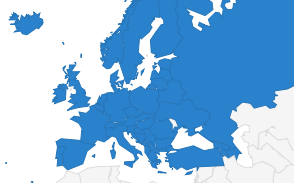8 tips for migration coverage

The European Federation of Journalists (EFJ) has been invited by the European Economic and Social Committee (EESC) to attend the 10th edition of the Civil society media seminar held at the Diplomatic Academy on 24-25 November 2016 in Vienna. The seminar gathered over 190 experts (policy makers, journalists, social workers, law enforcement officers, refugees, professors) and was dedicated this year to the topic “Communicating Migration”. EESC President Georges Dassis said :”Europe’s reconstruction is greatly due to migrants’ contributions. Over the past two years, media have played a big role in our perception of the migration flows. It is thus necessary to mention the benefits that migrants have brought to Europe.”
 Rafal Zaborowski from the London School of Economics and Political Science presented an exclusive study on media coverage of migration issue in 2015 by analyzing over 1.200 articles published in 8 EU countries and Arab-European press. By focussing on July (Hungary vs Merkel), September (death of Aylan Kurdi) and November (Paris attacks), the media coverage evolved from careful tolerance (Merkel) to ecstatic humanitarianism (Aylan) and ended with fear and militarisation (Paris). One of the most striking figures shared in the study underline how the media identify the refugees/migrants in their reporting : by profession (7%), by name (16%), by gender (24%), by age (27%) or by nationality (62%). “The figures indicate a trend to dishumanised the people and show them as the others oppose to the locals”, said the professor. Another report by Finish Institute was also supporting the same critical conclusions. M. Zaborowski ended his presentation with 3 recommendations : new trainings for journalists covering refugees, training to include more refugee’s voices in reporting and professional aid to support and facilitate access to refugee camps for journalists.
Rafal Zaborowski from the London School of Economics and Political Science presented an exclusive study on media coverage of migration issue in 2015 by analyzing over 1.200 articles published in 8 EU countries and Arab-European press. By focussing on July (Hungary vs Merkel), September (death of Aylan Kurdi) and November (Paris attacks), the media coverage evolved from careful tolerance (Merkel) to ecstatic humanitarianism (Aylan) and ended with fear and militarisation (Paris). One of the most striking figures shared in the study underline how the media identify the refugees/migrants in their reporting : by profession (7%), by name (16%), by gender (24%), by age (27%) or by nationality (62%). “The figures indicate a trend to dishumanised the people and show them as the others oppose to the locals”, said the professor. Another report by Finish Institute was also supporting the same critical conclusions. M. Zaborowski ended his presentation with 3 recommendations : new trainings for journalists covering refugees, training to include more refugee’s voices in reporting and professional aid to support and facilitate access to refugee camps for journalists.
Michael O’Flaherty, the Director of the EU Agency for Fundamental Rights, explained the work done by his agency and shared his practical tips for journalists covering migration.
8 practical tips for migration coverage (inspired by Michael O’Flaherty’s speech)
- Collect impeccable data : big picture is known but we know little about the details and the lack of quality information is a problem when we write about human stories
- Report the whole story about migration policies by reporting on local communities and challenge myths about migrants
- Produce videos where refugees speak and explain their situation, give a voice to local communities
- Use correct wording : 3 / 5 people are coming from the top 10 refugee camps in the world, by deduction we can clearly say that the majority of them are fleeing persecution ; instead of writing “migrant or refugee crisis” which makes the people a problem it’s better to write “crisis of migrant policy” ; instead of talking about the “EU / national values” or “moral values”, it’s better to talk about the “universal values which Europe hold dear”
- Correct misleading images : refugees and migrants are not young strong men using smartphones or tourist family members travelling with expensive luggages. The fact is 9 / 10 migrant children are unaccompagnied, they are tired, exhausted, hungry and need urgent help.
- Use international tools like FRA’s Media Toolkit, EJN’s ethical guidelines on migration reporting, Charter of Roma, Charter of Idomeni,… to enhance your reporting skills on migration
- Develop better skills on media literacy, help your audience better understand how to consume your contents and counter fake news or propaganda
- Engage with social media and accept the fact that you can’t fully cover and understand that world
Photo Credit: Mehmet Koksal/EFJ











